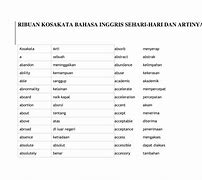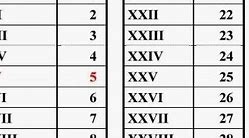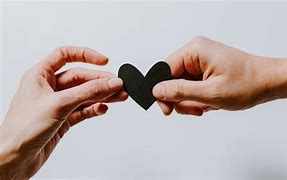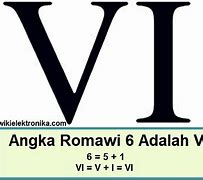
Middle baroque music (1630–1700)
The rise of the centralized court is one of the economic and political features of what is often labelled the Age of Absolutism, personified by Louis XIV of France. The style of palace, and the court system of manners and arts he fostered became the model for the rest of Europe. The realities of rising church and state patronage created the demand for organized public music, as the increasing availability of instruments created the demand for chamber music, which is music for a small ensemble of instrumentalists.
One pre-eminent example of a court style composer is Jean-Baptiste Lully. He purchased patents from the monarchy to be the sole composer of operas for the French king and to prevent others from having operas staged. He completed 15 lyric tragedies and left unfinished Achille et Polyxène. Lully was an early example of a conductor; he would beat the time with a large staff to keep his ensembles together.
Musically, he did not establish the string-dominated norm for orchestras, which was inherited from the Italian opera, and the characteristically French five-part disposition (violins, violas—in hautes-contre, tailles and quintes sizes—and bass violins) had been used in the ballet from the time of Louis XIII. He did, however, introduce this ensemble to the lyric theatre, with the upper parts often doubled by recorders, flutes, and oboes, and the bass by bassoons. Trumpets and kettledrums were frequently added for heroic scenes.
The middle Baroque period in Italy is defined by the emergence of the vocal styles of cantata, oratorio, and opera during the 1630s, and a new concept of melody and harmony that elevated the status of the music to one of equality with the words, which formerly had been regarded as pre-eminent. The florid, coloratura monody of the early Baroque gave way to a simpler, more polished melodic style. These melodies were built from short, cadentially delimited ideas often based on stylized dance patterns drawn from the sarabande or the courante. The harmonies, too, might be simpler than in the early Baroque monody, to show expression in a lighter manner on the string and crescendos and diminuendos on longer notes. The accompanying bass lines were more integrated with the melody, producing a contrapuntal equivalence of the parts that later led to the device of an initial bass anticipation of the aria melody. This harmonic simplification also led to a new formal device of the differentiation of recitative (a more spoken part of opera) and aria (a part of opera that used sung melodies). The most important innovators of this style were the Romans Luigi Rossi and Giacomo Carissimi, who were primarily composers of cantatas and oratorios, respectively, and the Venetian Francesco Cavalli, who was principally an opera composer. Later important practitioners of this style include Antonio Cesti, Giovanni Legrenzi, and Alessandro Stradella, who additionally originated the concerto grosso style in his Sonate di viole.
Arcangelo Corelli is remembered as influential for his achievements on the other side of musical technique—as a violinist who organized violin technique and pedagogy—and in purely instrumental music, particularly his advocacy and development of the concerto grosso. Whereas Lully was ensconced at court, Corelli was one of the first composers to publish widely and have his music performed all over Europe. As with Lully's stylization and organization of the opera, the concerto grosso is built on strong contrasts—sections alternate between those played by the full orchestra, and those played by a smaller group. Fast sections and slow sections were juxtaposed against each other. Numbered among his students is Antonio Vivaldi, who later composed hundreds of works based on the principles in Corelli's trio sonatas and concerti.
In contrast to these composers, Dieterich Buxtehude was not a creature of court but instead was church musician, holding the posts of organist and Werkmeister at the Marienkirche at Lübeck. His duties as Werkmeister involved acting as the secretary, treasurer, and business manager of the church, while his position as organist included playing for all the main services, sometimes in collaboration with other instrumentalists or vocalists, who were also paid by the church. Entirely outside of his official church duties, he organised and directed a concert series known as the Abendmusiken, which included performances of sacred dramatic works regarded by his contemporaries as the equivalent of operas.
Style of western classical music
Baroque music ( or ) refers to the period or dominant style of Western classical music composed from about 1600 to 1750. The Baroque style followed the Renaissance period, and was followed in turn by the Classical period after a short transition (the galant style). The Baroque period is divided into three major phases: early, middle, and late. Overlapping in time, they are conventionally dated from 1580 to 1650, from 1630 to 1700, and from 1680 to 1750. Baroque music forms a major portion of the "classical music" canon, and is widely studied, performed, and listened to. The term "baroque" comes from the Portuguese word barroco, meaning "misshapen pearl". The works of Antonio Vivaldi, George Frideric Handel and Johann Sebastian Bach are considered the pinnacle of the Baroque period. Other key composers of the Baroque era include Claudio Monteverdi, Domenico Scarlatti, Alessandro Scarlatti, Alessandro Stradella, Tomaso Albinoni, Johann Pachelbel, Henry Purcell, Georg Philipp Telemann, Jean-Baptiste Lully, Jean-Philippe Rameau, Marc-Antoine Charpentier, Arcangelo Corelli, François Couperin, Johann Hermann Schein, Heinrich Schütz, Samuel Scheidt, Dieterich Buxtehude, Gaspar Sanz, José de Nebra, Antonio Soler, Carlos Seixas, Adam Jarzębski and others, with Giovanni Battista Pergolesi being the most prominent Baroque composer of sacred music.
The Baroque saw the formalization of common-practice tonality, an approach to writing music in which a song or piece is written in a particular key; this type of harmony has continued to be used extensively in Western classical and popular music. During the Baroque era, professional musicians were expected to be accomplished improvisers of both solo melodic lines and accompaniment parts. Baroque concerts were typically accompanied by a basso continuo group (comprising chord-playing instrumentalists such as harpsichordists and lute players improvising chords from a figured bass part) while a group of bass instruments—viol, cello, double bass—played the bassline. A characteristic Baroque form was the dance suite. While the pieces in a dance suite were inspired by actual dance music, dance suites were designed purely for listening, not for accompanying dancers.
During the period composers experimented with finding a fuller sound for each instrumental part (thus creating the orchestra), made changes in musical notation (the development of figured bass as a quick way to notate the chord progression of a song or piece), and developed new instrumental playing techniques. Baroque music expanded the size, range, and complexity of instrumental performance, and also established the mixed vocal/instrumental forms of opera, cantata and oratorio and the instrumental forms of the solo concerto and sonata as musical genres. Dense, complex polyphonic music, in which multiple independent melody lines were performed simultaneously (a popular example of this is the fugue), was an important part of many Baroque choral and instrumental works. Overall, Baroque music was a tool for expression and communication.
What came after the baroque period?
By the middle of the eighteenth century, the baroque idea of music as a form of rhetoric was under attack. Music had a marvelously potent power to express even the most difficult concepts—but only in its most “natural” form, which the baroque era had ostensibly muddled. As Johann Adolph Scheibe said of J. S. Bach in 1737,
This great man would be the admiration of whole nations if he made more amenity, if he did not take away the natural element in his pieces by giving them a turgid and confused style, and if he did not darken their beauty by an excess of art. Since he judges according to his own fingers, his pieces are extremely difficult to play; for he demands that singers and instrumentalists should be able to do with their throats and instruments whatever he can play on the clavier, but this is impossible… Turgidity has led [him] from the natural to the artificial, and from the lofty to the somber; and…one admires the onerous labor and uncommon effort—which, however, are vainly employed, since they conflict with Nature.
Scheibe’s insistence on clarity and ease of performance hints at a major change in musical aesthetics: throughout his diatribe, the final arbiter of taste is not Plato or Aristotle, but ultimately the listeners and performers themselves. This new emphasis on direct melodic expression and clear musical architecture points the way to the classical period, the age of Mozart and Haydn.
What is “baroque,” and when was the Baroque period?
Derived from the Portuguese barroco, or “oddly shaped pearl,” the term “baroque” has been widely used since the nineteenth century to describe the period in Western European art music from about 1600 to 1750. Comparing some of music history’s greatest masterpieces to a misshapen pearl might seem strange to us today, but to the nineteenth century critics who applied the term, the music of Bach and Handel’s era sounded overly ornamented and exaggerated. Having long since shed its derogatory connotations, “baroque” is now simply a convenient catch-all for one of the richest and most diverse periods in music history.
In addition to producing the earliest European music familiar to most of us, including Pachelbel’s Canon and Vivaldi’s The Four Seasons, the Baroque era also greatly expanded our horizons. The acceptance of Copernicus’s 16th century theory that the planets didn’t revolve around the earth made the universe a much larger place, while Galileo’s work helped us get better acquainted with the cosmos. Advances in technology, such as the invention of the telescope, made what was believed to be finite seem infinite. Great thinkers like Descartes, Hobbes, Spinoza, and Locke tackled the big questions of existence. Geniuses like Rubens, Rembrandt, and Shakespeare offered unique perspectives through their art. European nations grew more and more involved with foreign trade and colonization, bringing us into direct contact with parts of the globe that were previously unfamiliar. And the growth of a new middle class breathed life into an artistic culture long dependent on the whims of church and court.
What musical forms came to define the baroque era?
While forms from earlier eras continued to be used, such as the motet or particular dances, the interest in music as a form of rhetoric sparked the development of new genres, particularly in the area of vocal music. Many of the forms associated with the baroque era come directly out of this new dramatic impulse, particularly opera, the oratorio and the cantata. In the realm of instrumental music, the notion of contrast and the desire to create large-scale forms gave rise to the concerto, sonata and suite.
Opera: A drama that is primarily sung, accompanied by instruments, and presented on stage. Operas typically alternate between recitative, speech-like song that advances the plot, and arias, songs in which characters express feelings at particular points in the action. Choruses and dances are also frequently included. The advent of the genre at the turn of the seventeenth century is often associated with the activities of a group of poets, musicians and scholars in Florence known today as the Florentine Camerata. The first surviving opera was Jacopo Peri’s Dafne, based on a libretto by Ottavio Rinuccini and performed in Florence in 1598; the earliest opera still performed today is Claudio Monteverdi’s Orfeo (1607). The subjects of the first operas are all taken from Greek myth, reflecting the genre’s close alliances with attempts to recreate the music and drama of ancient cultures, and were performed solely in aristocratic circles for invited guests.
When the first public opera houses opened in Venice in 1637, the genre was altered to suit the preferences of the audience. Solo singers took on a sort of celebrity status, and greater emphasis was placed on the aria as a result. Recitative grew less important, and choruses and dances virtually disappeared from Italian opera. The financial realities of staging frequent opera productions also had an effect. The spectacular stage effects associated with opera at court were greatly downplayed, and librettos were constructed to take advantage of stock scenic devices. By the early 18th century (particularly in Naples), two subgenres of opera became evident: opera seria, in which the focus was on serious subject matter and the da capo aria, and opera buffa, which had a lighter, even comic tone and sometimes used duets, trios and larger ensembles. The Italian tradition of opera gradually dominated most European countries. In late 17th century France, however, the Italian-born Jean-Baptiste Lully and librettist Philippe Quinault created a uniquely French version of opera known as tragédie-lyrique.
Oratorio: an extended musical drama with a text based on religious subject matter, intended for performance without scenery, costume or action. Oratorio originally meant prayer hall, a building located adjacent to a church that was designed as a place for religious experiences distinct from the liturgy. Although there are late sixteenth century precedents for the oratorio in the motet and madrigal repertoire, the oratorio as a distinct musical genre emerged amidst the excellent acoustics of these spaces in the early 1600s. By the middle of the 17th century, oratorios were performed in palaces and public theaters and were growing increasingly similar to operas, although the subject matter, division into two parts (rather than three acts) and absence of staged action still set it apart. Some of the composers associated with the genre in Italy include Giocomo Carissimi, Alessandro Scarlatti and Antonio Vivaldi. The oratorio grew in popularity in other parts of Europe as well. In Protestant Germany, dramatic music composed for use in the Lutheran church gradually became fused with elements of the oratorio, especially in the inclusion of non-Biblical texts. The oratorio passion, as it came to be called, culminated in the great works of J. S. Bach. Other well known examples outside of Italy include the English oratorios of George Frideric Handel, who popularized the genre in London as a result of the English distaste for Italian opera. Works such as Messiah, Israel in Egypt and Judas Maccabeus remain audience favorites to this day.
Cantata: an extended piece consisting of a succession of recitatives and set pieces such as arias, duets and choruses. Originating in early 17th century Italy, the cantata began as a secular work composed for solo voice and basso continuo, most likely intended for performance at private social gatherings. Many of these works were published, suggesting that they were performed by professional musicians and amateurs alike. By the middle of the century cantatas were published less frequently, suggesting that performances were increasingly being done by professionals. By the end of the 17th century, cantatas began incorporating the da capo aria and often had orchestral accompaniments. Major composers in the Italian cantata genre include Luigi Rossi, Antonio Cesti, Alessandro Stradella, and in the first half of the 18th century Alessandro Scarlatti, Handel, Benedetto Marcello and Johann Adolf Hasse. Outside of Italy, the expanding genre of the Lutheran motet began incorporating many elements of the Italian cantata, especially techniques of dramatic expression like recitative and aria. Bach’s many cantatas show the wide ranging influence of their Italian counterparts.
Sonata: Used to describe several types of pieces in the baroque era, the term sonata most commonly designated a work in several movements for one or more instruments (most frequently violins) and bassocontinuo; a sonata for two violins or other treble instruments plus bass was usually called a trio sonata. By the 1650s, sonatas were often classified either as sonatas da chiesa (“church sonatas”), usually comprised of four movements alternating between slow and fast tempos and performed in church, or sonatas da camera (“chamber sonata”), which consisted of a series of dances akin to the suite. Examples of both types can be found in the late 17th century works of Corelli. In the 18th century, Telemann, Bach andHandel wrote numerous sonatas modeled on Corelli’s sonatas da chiesa. The rise to prominence of solo sonatas for keyboard instruments begins late in the baroque period, including those for organ (Bach) and harpsichord (Handel, Domenico Scarlatti). Other famous examples of solo sonatas include Bach’s works for unaccompanied violin and cello.
Concerto: Derived from the Italian concertare (to join together, unite), the concerto took several forms during the baroque era. Until the early 18th century, a concerto was simply a composition that united a diverse ensemble consisting of voices, instruments or both. Sacred works for voices and instruments were often called concertos, while similar secular works were generally termed arie (airs), cantatas or musiche. While large scale sacred concertos can be found in the works of Claudio Monteverdi, more intimate compositions for one to four voices, continuo and additional solo instruments were far more common. In Germany, wonderful examples of the sacred concerto can be found in the works of Johann Hermann Schein, Michael Praetorius, Samuel Scheidt and Heinrich Schütz (especially his Kleine geistliche Concerte, or “Small Sacred Concertos,” of 1636–39).
Later in the seventeenth century, the concerto began to assume its modern definition: a multimovement work for instrumental soloist (or group of soloists) and orchestra. Taking its cue from the canzonas and sonatas of the late sixteenth and seventeenth centuries, which used contrasting groups of instruments to great effect, the concerto grosso alternates a small group of soloists with a larger ensemble. The works of Corelli, particularly his Op. 6 collection, provide perhaps the best known examples of the late 17th century concerto grosso. While Corelli’s works were emulated in the 18th century, most notably in Handel’s Op. 6 collection, many 18th century examples of the concerto grosso show the increasing influence of the solo concerto (for example, the Brandenburg Concertos of J. S. Bach).
The most dominant type of concerto in the 18th century was the solo concerto, which featured a single instrument in contrast with an ensemble. The most prolific composer of the solo concerto was Antonio Vivaldi, who wrote approximately 350 and established the concerto’s standard three-movement form (two fast outer movements, one middle movement in a slower tempo). While most solo concertos were written for violin, trumpet concertos were also popular, and concertos were also composed for cello, oboe, flute and bassoon. In the 1730s, Handel wrote 16 organ concertos, and Bach also composed several concertos for harpsichord around the same time (most of these are arrangements of preexistent works).
Suite: Based on the traditional pairing of dances in the Renaissance, the suite was the first multi-movement work for instruments. The suite was essentially a series of dances in the same key, most or all of them in two-part form. Around the middle of the 17th century in Germany the sequence of allemande, courante, sarabande and gigue became relatively standard, although other dance movements, such as additional allemandes or courantes,bourreés, gavottes and minuets, were often inserted. Most suites also began with an introductory movement such as a prelude, ouverture or fantasia. To many baroque composers, the different dances embodied specific characters. In his Der volkommene Capellmeister (The Complete Music Director), 1739, German theorist Johann Mattheson gave a list of each dance’s character: the minuet was “moderate gaiety,” the gavotte “jubilant joy,” the bourreé “contentedness,” the courante “hope,” the sarabande “ambition” and the gigue could signify a number of emotions ranging from anger to flightiness. Baroque suites were scored for solo instruments as well as orchestra; those written for one or two melody instruments and continuo are sometimes titled sonata da camera. French suites for keyboard are sometimes called ordres (as in the works of François Couperin, who inserted many non-dance movements including evocative character sketches of court personnel.
Late baroque music (1680–1750)
The work of George Frideric Handel, Johann Sebastian Bach and their contemporaries, including Domenico Scarlatti, Antonio Vivaldi, Tomaso Albinoni, Jean-Philippe Rameau, Georg Philipp Telemann, and others advanced the Baroque era to its climax, the High Baroque.
Bach's elder sons and pupils:
Well-known Baroque composers
There are a number of famous and influential composers of the Baroque period, most notably from Italy. Here are just three major Baroque composers.
Timeline of composers
A characteristic of the Baroque form was the dance suite. Some dance suites by Bach are called partitas, although this term is also used for other collections of pieces. While the pieces in a dance suite were inspired by actual dance music, dance suites were intended for listening, not for accompanying dancers. Composers used a variety of different movements in their dance suites. A dance suite commonly has these movements:
The four dance types (allemande, courante, sarabande, and gigue) make up the majority of 17th-century suites. Later suites interpolate one or more additional dances between the sarabande and gigue:
There are many other dance forms as well as other pieces that could be included in a suite, such as Polonaise, Loure, Scherzo, Air, etc.
The period of baroque music dates back to the 17th century, lasting roughly from 1600 to 1750, although some claim the era already began to blossom in 1580. The term baroque most likely stems from French baroque and Portuguese barroco, both of which refer to ‘a pearl of irregular shape’. The era was preceded by the Renaissance era and originated in Italy, where it reportedly developed for up to 20 years before moving into the broad Western classical music practice.
Overall, Baroque music is further divided into three sub-periods:
Early Baroque — 1580–1650,
Middle Baroque — 1630–1700, and
Late Baroque — 1680–1750.
As previously mentioned, Baroque music bloomed in Italy, where it first centered around Italian composers who were primarily based in Rome and its surroundings. These artists drew inspiration and tradition from Renaissance music while gradually attaching greater significance to harmony and tonality. One of the key figures of early Baroque was Claudio Monteverdi, an Italian composer and a pioneer in the development of opera, who was praised for furthering the transition from Renaissance- to Baroque-styled music.
Monteverdi was responsible for establishing two essential types of compositions. One was derived from Renaissance polyphony (featuring two or more prominent simultaneous lines of independent melody), which was dictated by the harmonic content (not the text or melody) and was termed ‘prima prattica.’ Meanwhile, the other type, so-called ‘seconda prattica,’ was guided by the principle that words should rule the music, and melody can be broken should the drama, emotion, or text demand it. In other words, ‘seconda prattica,’ unlike ‘prima prattica,’ allowed for more freedom to make the music more dissonant (inconsistent, incompatible, tensile, and, in a way, ugly-sounding) if desired.
Once Baroque music spread across Europe, composers of various origins and cultures enhanced the style with new elements. While the influence of French and British composers, such as Jean-Baptiste Lully, Jean-Philippe Rameau, and Henry Purcell, was considerable, the German school of baroque music also left its mark.
Composers like Goerg Philipp Teleman, George Frideric Handel, Michael Praetorius, Samuel Scheidt, and, most importantly, Johann Sebastian Bach were truly formative for the high Baroque period. In fact, it was Bach’s death in 1750 that ultimately brought the Baroque era to its end, passing the baton to the Classical period.
It’s also essential to note that, like other eras, the Baroque period was not limited to music only. The era was further celebrated for its captivating paintings (including works by Peter Raul Rubens, Michelangelo Carravagio, and Rembrandt van Rijn), melodramatic sculptures (dominated by Gian Lorenzo Bernini), and glorious architecture (most notably in the catholic church).
What was it like to attend a concert in the baroque era?
In modern times, going to a concert is an event. We hear an ad on the radio or see a listing in the newspaper; we purchase tickets; we go to a concert hall and sit quietly until it is time to applaud. In the baroque era, this kind of public concert was rare. Many of the most famous baroque compositions were performed in churches for a service, or as part of a private concert or celebration in the home of a wealthy patron. During the course of the baroque, however, public performances became more common, particularly in the genres of opera and oratorio, and our modern concert tradition began to coalesce in many European cities. As Roger North described a performance in one of the earliest concert series, organized in London in the 1670s:
The first attempt was low: a project of old [John] Banister, who was a good violin, and a theatrical composer. He opened an obscure room in a public house in White friars; filled it with tables and seats, and made a side box with curtains for the music. Sometimes consort, sometimes solos, of the violin, flageolet, bass viol, lute and song all’Italiana, and such varieties diverted the company, who paid at coming in. One shilling a piece, call for what you please, pay the reckoning, and Welcome gentlemen.
The advent of the public concert made the growing middle class an important source of income for musicians. By the end of the baroque, this social subset had become a musical patron almost as powerful as the church or court.
What are the characteristics of the Baroque era?
The word Baroque comes up in a number of different contexts, as it does not refer to a musical style alone. Many other art forms, such as painting, had their own masters of the Baroque period, most notably Caravaggio, Vermeer, and Rembrandt. Characteristic of the baroque period was its grandiosity and use of sophisticated details to create a sense of drama and contrast.
Some new musical forms of the Baroque period include opera, oratorio, cantata, concerto, and sonata. One important idea of the Baroque era was seeing music as a tool for communication, and the period put emphasis on instrumental music. The use of sophisticated details and ornamentation used widely in Baroque visual arts can be heard in the music of the period as well — for example, in the use of different techniques to add finer details to the music.
Another prevalent characteristic of Baroque music is the so-called basso continuo. The composition had a separate basso continuo group that could be seen as the rhythm section of the Baroque era. The purpose of the basso continuo was to provide a chord progression and a bassline that played throughout the entire musical piece. The number and variety of instruments in the continuo group could vary.























